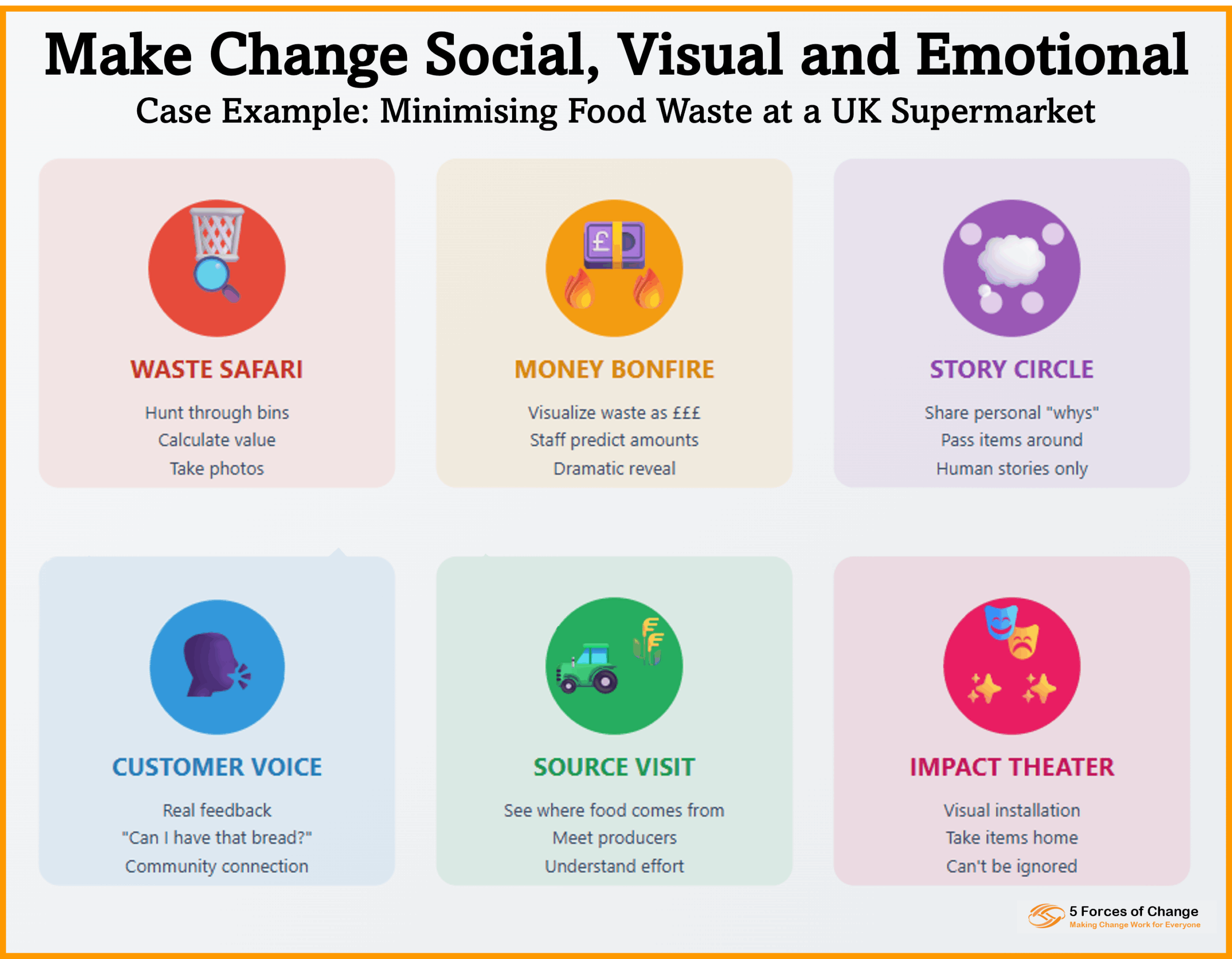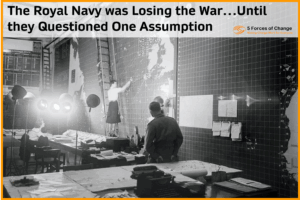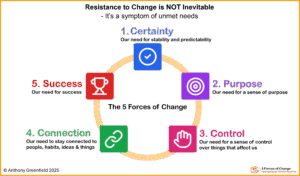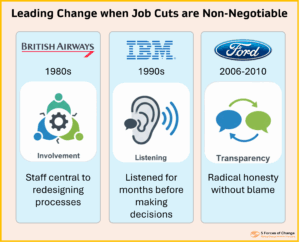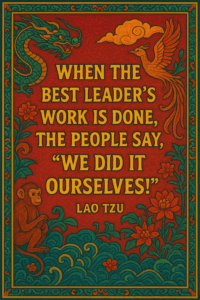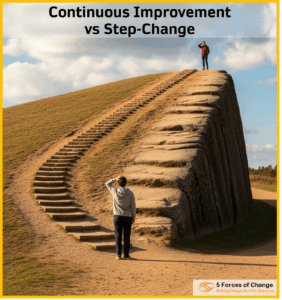Facts tell, but experiences sell. So, it pays to make change social, visual, and emotionally resonant. And always connect it to something staff care about – whether that’s community, fairness, meaningful work or sometimes even money. It needs to be experiential, not a PowerPoint lecture.
What does this look like in practice? Take the example of a supermarket client that wanted to adopt a ‘Zero Waste Mindset’ to minimise Food Waste. We helped them launch a series of ‘edutainment’ events.
The best place to start any change is to help employees answer the ‘Why?’ question. In this case, the specific question was “Why should we care about Food Waste?” To help employees answer this we introduced a number of activities such as:
Waste Safari
Mixed teams (managers + floor staff) from a store were asked to go on a hunt through the bins for one shift. They were armed with clipboards and ask to: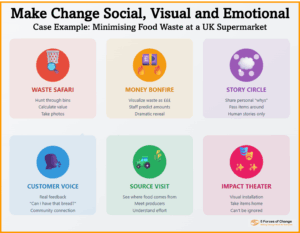
- Estimate the retail value of the waste they found
- Take photos of the most shocking items
- Guess which department generated what
- Create a “wall of shame and fame” display in the staff room
The visceral experience of seeing £500 worth of perfectly good food in one day’s rubbish is far more powerful than any statistic.
The Money Bonfire Game
Visual displays were set up in staff break rooms, including:
- A stack of fake money representing monthly waste
- Staff were invited to make predictions on sticky notes. For example: “How much do you think we throw away each month?”
- The true answers were then revealed dramatically at a team meeting.
- Teams were asked, “What could we spend the savings on?” – answers that came back included “Extra staff to cover Christmas”, “A staff party,” or “A new staff kitchen.”
This made the savings tangible and personal.
Personal Connection Story Circle
In small groups during a paid 30-minute session:
- People passed around items headed for the bin (slightly bruised apple, bread one day past date, a dented can)
- Each person shared: “What does waste mean to you personally?” (staff often have powerful memories of scarcity perhaps going back to older generations)
- No corporate-speak allowed, just human stories
It was found that staff had incredibly diverse motivations: some cared about climate, others about feeding their kids on tight budgets, others about the principle of waste. Make Change Social, Visual and Emotional.
The Reality Check Game
Quick 10-minute team huddle game:
- Products were shown around one by one
- Staff guessed: “Bin it or sell it?”
- It was then revealed what would actually happen vs. what could happen
- Teams also discussed new apps, such as ‘Too good to Go’, which are used to inform customers about daily bargain bags of food close to expiry that they can buy at deep discounts.
- Discuss why certain avoidable waste was currently occurring.
Often staff discovered they were following outdated rules or making assumptions about what customers would buy.
The Department Challenge Reveal
Following on from the Waste Safari and other activities, store departments measured their current waste levels and set themselves targets and plans to reduce Food Waste over time. Fun monthly prizes were then awarded to teams for their innovative ideas and progress in eliminating waste.
The principles of success:
- Empower employees to find their own answer to why change is necessary
- Give people ownership of the problem and the solutions
- Make change social, visual and emotional.
The Customer Voice
Record (with permission) or collect written feedback from customers about waste. Play it back to staff:
- “I saw you throw away perfectly good bread—can I have it?”
- “Why is everything wrapped in so much plastic?”
- “I love that you donate to the food bank”
Staff often don’t realise customers notice and care. It reframes waste from “company policy” to “what the people we serve actually want.”
Competitor Comparison Shop
Send volunteer teams to competing supermarkets (on company time, with small budget for snacks):
- What are they doing about waste?
- Take photos of their practices
- Report back: “Tesco is doing X, Sainsbury’s does Y”
- Competitive spirit kicks in: “We can do better than that!”
The Backwards Delivery
Arrange with a supplier to bring staff to see:
- Where the food actually comes from (farm visit, bakery tour)
- The effort that goes into producing what ends up in the bin
- One dairy farmer showing how much work goes into milk that gets thrown out is worth hours of training
Guerrilla Impact Theatre
At shift change, set up a dramatic visual installation:
- A week’s worth of wasted bakery items displayed artfully
- A timer showing “This took 47 hours of farmers’ work to produce”
- Staff can take items home that day
- QR code to short video explaining the impact
Make it impossible to ignore but not preachy.
Your Food Story Wall
Create a physical or digital space where staff share:
- Photos of meals they’ve made from reduced items
- Family recipes that use misshapen veg
- Stories about food insecurity they’ve experienced or witnessed
- Tips for home waste reduction
Builds community and shows the continuum between work and life.
The Three Question Conversation
Instead of a formal training, have managers ask each staff member individually over a coffee:
- “Have you ever had to throw away something that felt wrong?”
- “If you could change one thing about how we handle waste, what would it be?”
- “What do you need to make that change happen?”
Document the answers. Act on patterns. Report back.
How can you make change Social, Visual and Emotional? Contact us at info@5forcesofchange.com and LinkedIn Blog

